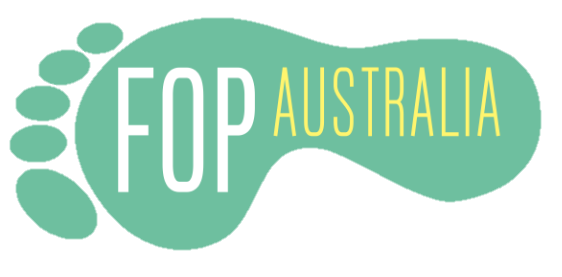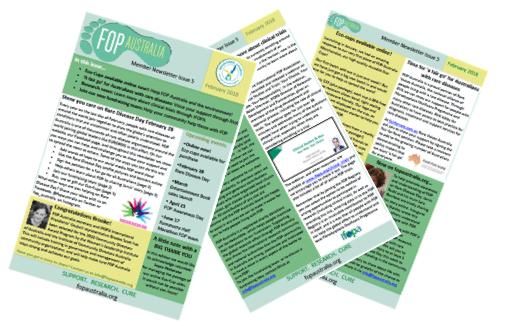Meet Jarvis – a cheeky and funny six year old who loves to sing U2 songs and race around the park.
Jarvis is young and so when suddenly the simple things in life like running, swimming in the pool, or even getting dressed suddenly become harder, naturally he gets frustrated and it’s hard to explain to a child of four that somehow, randomly in the universe of life – he was given a rare disease to live with.
You see, Jarvis has FOP (Fibrodysplasia ossificans progressiva) – one of the rarest, most disabling genetic conditions known to medicine. FOP causes bone to form in muscles, tendons, ligaments and other connective tissues. Bridges of extra bone develop across joints, progressively restricting movement and forming a second skeleton that imprisons the body in bone. There are no other known examples in medicine of one normal organ system turning into another.
FOP affects approximately 800 people around the world, of which, fifteen are confirmed to live in Australia. The biggest indicator of FOP in babies is deformed big toes. Yet medical professionals are largely unaware of this warning sign given the disease’s 1 in 2 million incidence rate.
Jarvis was born in Brisbane, Australia and diagnosed at around 2 years old, nine months after he hit his head on some tiles. His head swelled so much he couldn’t open his eyes. After countless visits to the hospital, neurologist, paediatricians, plastic surgeons, he was finally referred to a geneticist for testing for fibromatosis. No-one even considered FOP.
Around this same time there was a segment on a current affairs program discussing another Australian patient – Zach and his mum Laurin. Lara didn’t see the program but her girlfriends did, and immediately thought Jarvis might share Zach’s condition.
“The next day I contacted the hospital only to be told it wouldn’t be FOP as it is such a rare disease. Unfortunately a lot of people with rare diseases face this initial response”, Lara recalls.
“Eventually, we found a specialist in Australia who was confident from photos I had sent – that Jarvis did indeed have FOP. Genetics Queensland then confirmed this. We felt numb and ignorant as to what this meant for our son” she says.
After working tirelessly to raise funds to allow them to travel with Jarvis to the 2014 Manchester FOP conference, Jarvis was seen by world-renowned FOP experts from the University of Pennsylvania, Drs Kaplan, Pignolo and Shore.
“We have learnt so much from other families on how they deal with their child having FOP and we have made lifelong friends who are providing a great support for us while Jarvis is going through his first flare up”, says Lara.
Watching Jarvis going through his first flare up is extremely difficult for his parents. He’s been suffering since September 2015 with moving masses of muscle in the upper body – restricting movement in his arms and neck.
“We thought we had time, we thought an approved treatment would be here before he had to go through anything”, sighs Lara. But that hasn’t been the case. “Our Jarvis is resilient, he’s funny, he loves U2 with a passion and we believe his love of music is really helping him. He has not let these flare ups stop him one bit. He has had them for nearly five months”, Lara explains.
“FOP is unpredictable and never the same in anyone and with no effective treatment – watching his little body be ravaged by this disease breaks our hearts”, Lara says sadly.
But despite this, the global FOP community has real hope of a treatment or cure – with several drug trials and studies taking place around the world. One of these includes a site in Brisbane under Professor Matt Brown of the Queensland University of Technology.
Jarvis’ experience prompted Lara and other Aussie FOP families to establish Australia’s first FOP not-for-profit organisation, FOP Australia, which has been up and running since May 2015 and hopes to raise much needed funds for medical research and patient support for Australian living with FOP.
“In just a few short months, Jarvis can no longer lift his hands above his head or bend down to pick something off the floor. It’s terrifying”, says Lara.
“We desperately need funding for drug trials, medical research and access to experts” Lara says passionately. “We’ve had so much support from our friends and FOP community so far, and we know there will be more now that FOP Australia is up and running” Lara says hopefully.
Written by inaugural FOP Australia board director Maris Stanley
28 February is Rare Disease Day, when activities are held around the world to show people living with rare conditions to know they have the support of a community behind them. Explore our web page to learn more about life with FOP by reading our other profiles, learn more about the disease, find out about the work and goals of FOP Australia. There are also links to many ways you can contribute to the fight to beat FOP – by supporting our fundraisers, joining our membership, or donating online. You can also show your support by liking our Facebook page.



